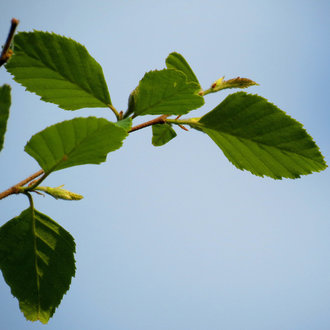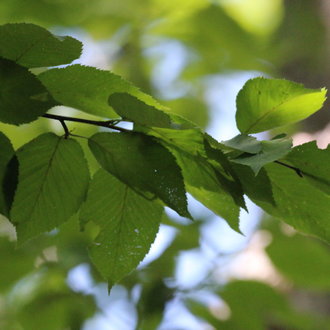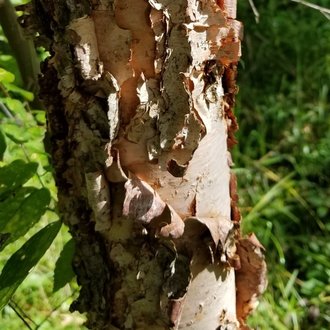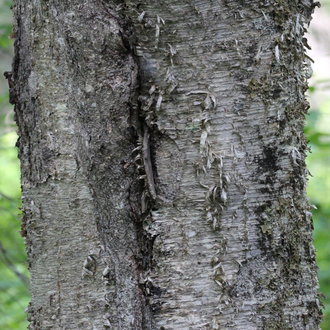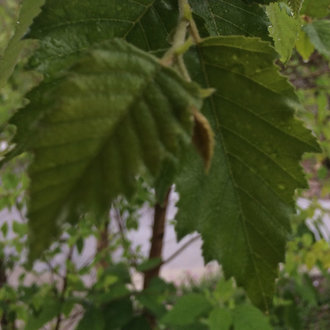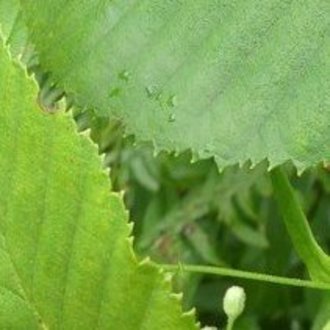River Birch vs Yellow Birch
This guide is under construction and has not been published yet. It may have errors. When in doubt, double-check other sources for definitive ID.These plants are occasionally confused where their ranges overlap. Yellow birch has a much more northerly distribution. They are easily distinguished at any time of year by bark, and when leaves are available, can also be distinguished by leaf shape.
River Birch (Betula nigra) | Yellow Birch (Betula alleghaniensis) |
A birch of the southeast to central U.S., mostly associated with bottomlands and alluvial soils; the most southerly birch in North America and the only birch in much of its range. | A large birch native to northeastern North America, named for the often-yellowish color of its bark. |
Leaf shape variable; leaves sometimes have a distinct rhombus shape, with two straight sides close to the base, lacking serrations, and two sides that are serrated and curve to a point. Sometimes more flat-based. Photo © Katja Schulz, CC BY 4.0. | Leaves consistently egg-shaped, and serrated along the whole margin. Photo © Rob Foster, CC BY 4.0. |
Bark peels off in large sheets; looks paler, whitish on outside and darker, reddish on underside. Photo © Sheryl Marquez, CC BY 4.0. | Gray-to-yellowish bark peels off in thin, horizontal, ribbon-like strips. Photo © Rob Foster, CC BY 4.0. |
Leaves doubly-serrate, with large points at the end of each vein, and smaller, regular serrations between these. Photo © Jaime González, Public Domain. | Leaves irregularly serrated, but without appreciably larger teeth at the end of leaf veins. Photo © Christian Grenier, Public Domain. |
References & External Resources
These short lists show only links helpful for ID. For a complete list of references and resources also covering other aspects of ecology, visit the links section of the full article on each plant, which is the first entry here.



